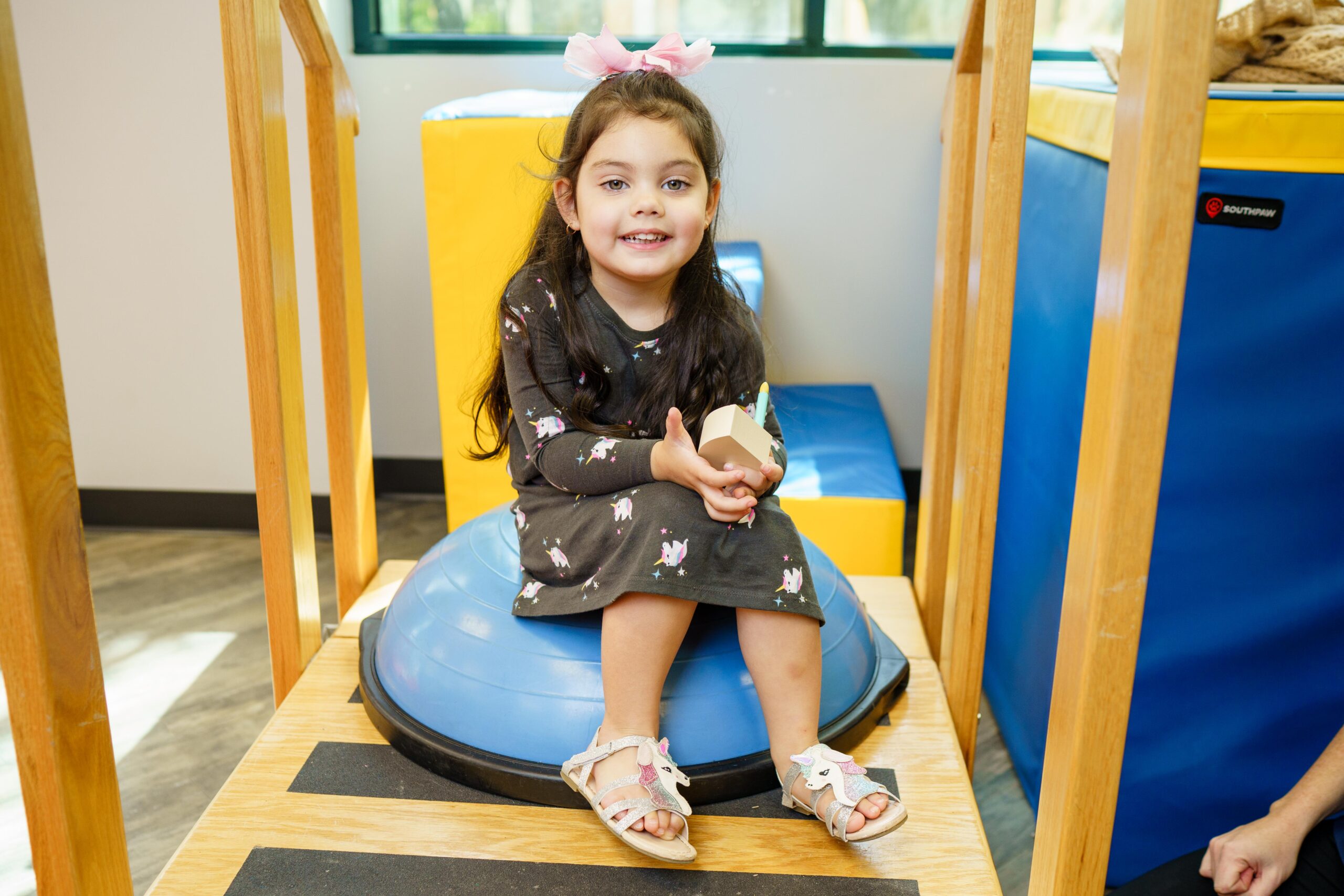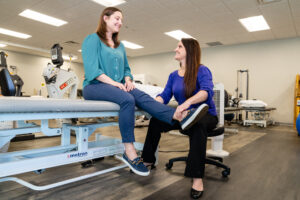A Guide to Chronic Pain in Children: Causes, Risk Factors and Treatment

Back to physical health resource hub
A child’s chronic pain journey is a family’s journey. Parents and caregivers are thrust into a challenging role, often without a guide, of navigating complex medical decisions, managing countless appointments and providing constant support.
In this article, we will look at the prevalence of chronic pain, common types of chronic pain, what causes it, risk factors and how to treat it for children.
What is chronic pain and its prevalence?
Chronic pain is a broad term for pain that has lasted longer than six months. The reason six months is the measure because during this time, tissues would have had long enough to heal and pain would have resolved.
Pain is complex when it becomes chronic. It affects how well one can interact with friends and family; it begins to affect thoughts and emotions. Over time these factors can also influence the pain. For this reason, chronic pain is best viewed from a biopsychosocial perspective.
Chronic pain in children is more common than many people realize. In 2024, a systematic review of a study on pediatric chronic pain, conducted in 2000, was able to provide an update on the prevalence and type of chronic pain experienced by children and adolescents. A total of 119 studies were included that reported the status on over a million children from 70 different countries. The overall prevalence of chronic pain was identified at nearly 21%, which equates to one in five children and adolescents experiencing chronic pain¹.
What causes chronic pain in children
Chronic pain can develop from unresolved injury or chronic illness, a surgery or changes in the nervous system. Sometimes pain develops from repetitive minor trauma that some experience with hypermobile joints. Surprisingly, children are also known to develop painful conditions like fibromyalgia. Social factors have also been known to affect pain perception such as coping with stress at school, friend relationships or family.
Common types of chronic pain
When we picture childhood, we often think of sunny days at the park, laughter and endless games. But for a significant number of children, this is overshadowed by chronic pain. It is not just a fleeting ache, it’s persistent pain that can disrupt every aspect of a young person’s life, from school and friendships to their overall well-being.
The most common types of pain reported in children include:
Type of Pain |
Prevalence (%) |
| Headache | 25.7 |
| Musculoskeletal | 25.7 |
| Multisite/General | 21.0 |
| Back | 19.1 |
| Abdominal | 17.3 |
| Other | 6.9 |
| Overall | 20.8% |
The data also reveals gender disparity, with girls being more susceptible to chronic pain than boys.
High-impact chronic pain
For some children, pain is not just chronic but also debilitating. This is known as high-impact chronic pain. It is characterized by a greater pain intensity and frequency that significantly interferes with daily activities like attending school (Miro, Roman-Juan et al. 2023).
One study noted that while 46% of its youth population experienced chronic pain, 5% of that group experienced high-impact chronic pain, a condition that also showed a greater propensity for females.
A U.S. Pain Foundation survey highlighted the persistence of this issue, with 82% of pediatric respondents acknowledging they had been in pain for at least half of their life.
Factors contributing to chronic pain in children
Investigators conducting research into childhood chronic pain have found that there are multiple factors contributing to the tendency of increased pain in younger populations.
Some of these risk factors include:
- A decrease in physical fitness
- A family history for pain conditions
- Anxiety and depression
- Poor sleep
- Poor nutrition
- Altered pain processing and family dynamics
Source: Pain syndromes in children (Malleson 2001).
Children with multiple risk factors are more likely to experience persistent and more intense pain. This puts them in a state of higher ‘pain vulnerability’ than children with less risk (CL von Baeyer, GD Champion. 2011).
The concept of pain vulnerability then introduces the concept of pain resilience and the challenge for health care providers to increase the ability of adolescents to deal with chronic pain.
Chronic pain’s effect on mental health
Chronic pain is not just a physical sensation. It creates a ripple effect that touches every corner of a child’s world, bringing significant psychological and emotional challenges. The same U.S. Pain Foundation study revealed a troubling connection between pain and mental health:
- 84% of children with chronic pain experienced anxiety
- 79% felt isolated from their peers
- 48% expressed guilt for being sick
- 42% endorsed thoughts of self-harm, with 22% contemplating suicide.
Impact on family and the child
Parents may experience lost work due to multiple medical appointments and days when they need to be home with the child. The financial strain can be immense, as many effective treatments may not be covered by insurance, forcing families to sacrifice hobbies, vacations and savings.
To protect their child, parents may unintentionally contribute to negative outcomes by becoming overprotective, restricting even normal activity or lowering their expectations for activity and success. Children in this environment may develop a dependency on others and begin to feel that their life is dictated by their pain rather than their own choices.
How to treat chronic pain in children
While the challenges are significant, there is hope. Successful treatment for children with chronic pain begins with a partnership of rehabilitation therapy and psychological therapy. The treatment process starts with a pain assessment and then continues through building rapport with the child, introducing therapy as structured exercise and psychologic therapy.
Pain assessment process
Once a child with pain enters the health care arena, one of the first steps is to assess the pain. Depending on the age of the child, the therapist may interview the parents, noting changes in behavior and demeanor as a response to pain.
Behavioral responses to note may include:
- Abnormal positioning
- Changes in facial expression
- Atypical quietness
- Increased irritability
- Low mood
- Sleep disruption
- Changes in appetite and school performance.
For infants and toddlers, facial expressions, movements and positions, crying and groaning may be indicators of pain. By the age of 8, most children can complete basic questionnaires about their pain.
Catastrophizing, the irrational belief that the worst outcome will happen further complicates pain. This thought pattern develops into fear of movement since the child is anticipating that things will get worse. When this influences behavior – like not doing normal, safe activities – it begins to contribute to higher degrees of pain with poorer outcomes.
Function, which is a person’s ability to perform activities and tasks for daily life, is another concept that can be identified by the Functional Disability Inventory.
Children can rate their ability to perform activities from no difficulty to severe difficulty. The questionnaire metrics then identify children as having either low, moderate or severe perceptions of disability. Likewise, the higher degree of disability the poorer the outcome and higher prognosis for future disability.
Rapport building with the patient
The development of a positive rapport and establishing a safe space for therapy to begin is key. Trust, mutual respect and a sense of hope lay at the foundation of a good rehabilitation experience. Therapy then begins to focus on what the child can do while encouraging increased activity as appropriate.
Therapy through structured exercise
Finding a reason to move with the guidance of a professional can be the turning point for a child dealing with chronic pain. Exercise is an important element in rehabilitation. It activates the body in normal healthy movement patterns. It can also promote good sleep, resilience to stress and help to divert pain responses.
To maintain motivation, therapists blend science with fun. A therapy session may creatively use games to incorporate physical skills that would be a part of a more structured exercise. For example, standing on a balance cushion while tossing bean bags or standing on a tilt board while playing catch can work on balance and stability.
Goal directed activities are magical at maintaining motivation. The goal can be as easy as ‘go 2 seconds faster,’ get more bean bags than yesterday,’ or ‘aim for the center’ to get more points. Distraction and positive reinforcement go hand in hand with activities to maintain hope and engagement.
Changing the brain’s neurochemistry
Making therapy fun is not just about engagement. Fun changes the brain’s neurochemistry. This element of play can release neurotransmitters that decrease pain sensitivity, creating a positive feedback loop that enhances therapeutic alliance and improves performance. As children see themselves succeeding at activities that were once challenging, their self-efficacy grows and so does their hope for the future.
Using psychology to address the mind-body connection
Adding psychology to the team of providers and clinicians caring for children in pain is a winning move.
To treat pain effectively, the physical, emotional and psychological aspects must be addressed. Pediatric rehabilitation psychologists are familiar with this and are uniquely positioned to help with chronic pain.
Cognitive behavioral therapy concepts can be presented in a way that adolescents can understand and apply. Psychologists do this by teaching relaxation techniques, changing old beliefs about pain, building new coping skills and addressing anxiety or depression that may accompany pain.
Coping with pain can include taking time to really breathe, to inhale and exhale and appreciate the natural rhythm. Reclaiming the fun of being at the park, joining friends at school and finding personal joy in art are powerful ways to cope with pain.
The journey through pediatric chronic pain is challenging, but no family has to walk it alone. By combining physical rehabilitation with psychological support, we can help children build the resilience they need to manage their pain and thrive.
How Brooks Rehabilitation can help
Brooks has several outpatient clinicians who specialize in rehabilitation for pediatric pain and a variety of other conditions across our system of care. Treatment could involve physical therapy as a starting point with other components added as needed. For some this may mean getting help with school re-entry and modifications with our School Re-entry Program. We work hand in hand with your other providers to reach the best possible outcome.
Learn how to request care at Brooks for your child on our Become a Patient page.
Footnotes
- Chambers CT, Dol J, Tutelman PR, Langley CL, Parker JA, Cormier BT, Macfarlane GJ, Jones GT, Chapman D, Proudfoot N, Grant A, Marianayagam J. The prevalence of chronic pain in children and adolescents: a systematic review update and meta-analysis. Pain. 2024 Oct 1;165(10):2215-2234. doi: 10.1097/j.pain.0000000000003267. Epub 2024 May 15. PMID: 38743558; PMCID: PMC11404345.


